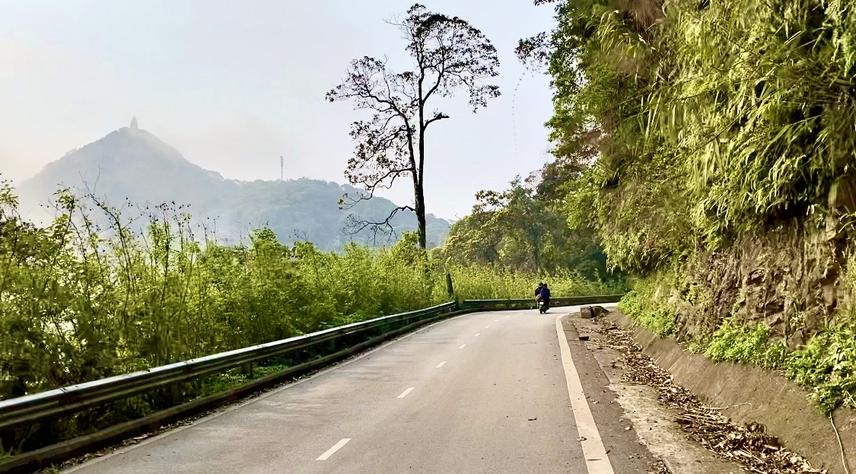Ta Tuyet Nga
Ba Vi National Park (NP) is the only NP in Vietnam located in Hanoi, the capital. It was established in 1991 to protect the ecosystem, fauna-flora resources, landscape, and historical and spiritual relics in this area. A 14-km two-lane paved road inside the national park runs from the gate, leading to spiritual tourist spots on the top of the mountain, and to resorts and camping on the mountainside, mainly exploited for tourism activities. It creates a barrier that animals need to cross to reach a stream, a potential habitat for finding mates. Sometimes it also becomes an attractive place for heating up or foraging when insects are attracted to light on the road.

Main road inside Ba Vi National Park. ©Ta Tuyet Nga.
Ba Vi NP is renowned for spiritual relics and the blooming of wild sunflowers (Tithonia diversifolia). Combined with the cool climate at the end of each year, this has unintentionally attracted more tourists. The number of visitors to Ba Vi NP is up to hundreds of thousands for experimental activities each year. Along with that, the volume of vehicles on the main road is also very large, especially during the holiday season of Lunar New Year and the wild sunflower season. All these elements unintentionally create favourable conditions for increasing animal accidents in the national park, mostly affecting sensitive species such as reptiles and amphibians, and occasionally rodents and bush birds. Notably, reptiles and amphibians are known as the most severely affected wildlife by traffic accidents because their biomass is quite large and they often occur near the roads.
In this project, we focused on evaluating the roadkill impact on reptiles and amphibians in Ba Vi National Park, Northern Vietnam. We will add to the database related to threats to herpetofauna in the NP, thereby providing a scientific basis for proposed solutions to minimize impacts from human activities and tourism, serving the conservation, management, and restoration of habitats. We also hope to identify the road sections with a high risk of collisions for herpetofauna to propose the installation of signs and directional signs for drivers, vehicles, and tourists. More importantly, the greatest achievement of the project will be to aim for a broader approach in other protected areas (PAs) in Vietnam with the desire to improve the effectiveness of habitat conservation for herpetofauna.